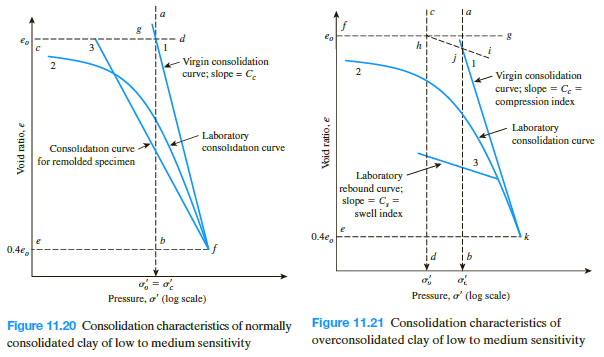I just recently read "Geotechnical Engineering in Residual Soils" and based on the statements made in the text, settlement analyses on residual soils are best performed using the coefficient of compressibility (mv). The author is not a fan of working with consolidation test data when plotted on the log scale. It is actually an interesting read.
I am currently working on a project with residual soils and decided I would plot the consolidation data on both a log and linear pressure scale. I ran the settlement analyses using the conventional inputs (Cr, Cc, eo, max past pressure, etc.) and estimated a max total settlement between 0.75 and 1 inch. I then performed another settlement analyses using the coefficient of compressibility (mv) and estimated the settlement to be about twice as much, 1.75 to 2 inches. I know the coefficient of compressibility changes based on stress level; however, my plots indicate the slope to be relatively straight within the working stress range.
For those of you that routinely use mv to estimate settlements, do you typically estimate larger settlements than when using the conventional method?
I am currently working on a project with residual soils and decided I would plot the consolidation data on both a log and linear pressure scale. I ran the settlement analyses using the conventional inputs (Cr, Cc, eo, max past pressure, etc.) and estimated a max total settlement between 0.75 and 1 inch. I then performed another settlement analyses using the coefficient of compressibility (mv) and estimated the settlement to be about twice as much, 1.75 to 2 inches. I know the coefficient of compressibility changes based on stress level; however, my plots indicate the slope to be relatively straight within the working stress range.
For those of you that routinely use mv to estimate settlements, do you typically estimate larger settlements than when using the conventional method?

